What happened to the author of the best known photograph of World War II?

The capture of Berlin symbolized the final victory over Nazism and to a certain degree represented the culmination of World War II. A photograph showing the hoisting of a Soviet flag over the Reichstag, taken by Soviet war photographer Yevgeny Khaldei, became its symbol. It must have been reproduced by all the world's media.
However, the spectacular success of the photograph didn't make its author a star in his own country. Soon after the war he was sacked from his job after being branded as "mediocre", and practically sank into oblivion for many years.
A boy with a bullet in his chest
Yevgeny Khaldei was born on March 23, 1917, in Donetsk in today's Ukraine. He was only a year old when a wave of Jewish pogroms organized by Ukrainian nationalists swept across the country. Khaldei's mother tried to protect her son with her own body, but a bullet got through and lodged in the baby's chest. The boy survived. It was the first time he had witnessed real tragedy with his own eyes. Alas, it was by no means the last.
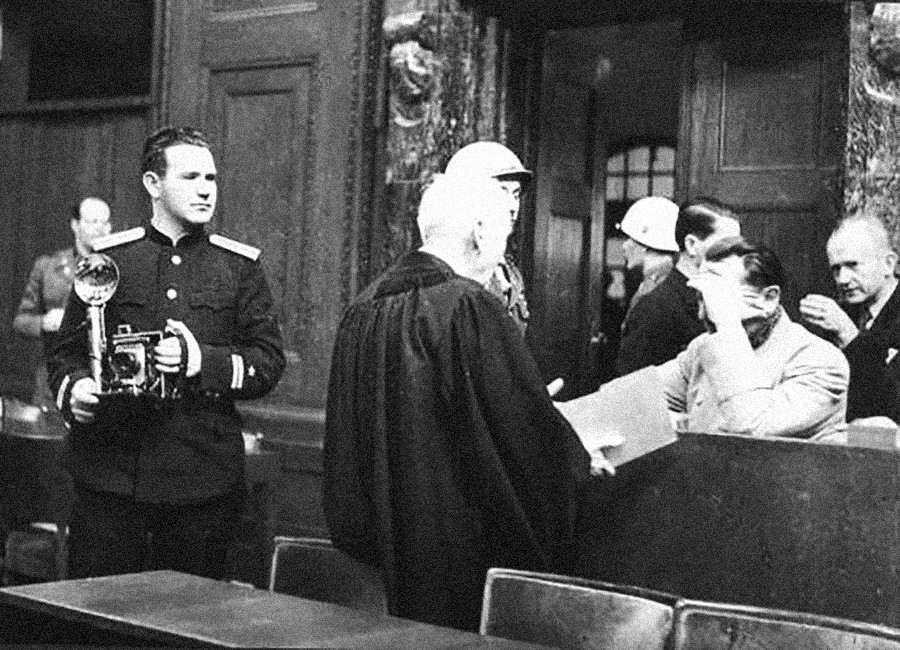
Khaldey stays next to Göring during Nuremeberg process.
Archive photoKhaldei’s interest in photography developed when he was still a child: he would often pop into the local photo studio and help rinse negatives. He made his first camera himself using two cardboard boxes and a lens made from his grandmother's spectacles. In the 1930s famine raged in the region and 14-year-old Yevgeny had to go to work as a metalworker at a train depot, where he received his vocational "education" on the shop floor. Essentially, it was the only formal education he ever received. As for the art of photography, he was self-taught. During breaks at work he took photographs of his depot and he was soon invited to work on the newspaper, Stalinist Worker. At the same time, Khaldei used to send his photographs to the Moscow newspapers and some of them were published.
In the summer of 1937, at the age of 19, he moved to Moscow and began to work for TASS, the main Soviet news agency. Initially, his job was as a photo reporter dealing with the subject of workers of collective farms and factories across the country. But on June 22, 1941, the war started, and everything changed.
First face of war
Khaldei was at work in the TASS office when at 12:00 on June 22 People's Commissar for Foreign Affairs Vyacheslav Molotov delivered his historic radio address: "Without any claims having been presented to the Soviet Union, without a declaration of war, German troops have attacked our country." Khaldei rushed out into the street and took one of his best known shots - of Muscovites listening to Molotov's speech.
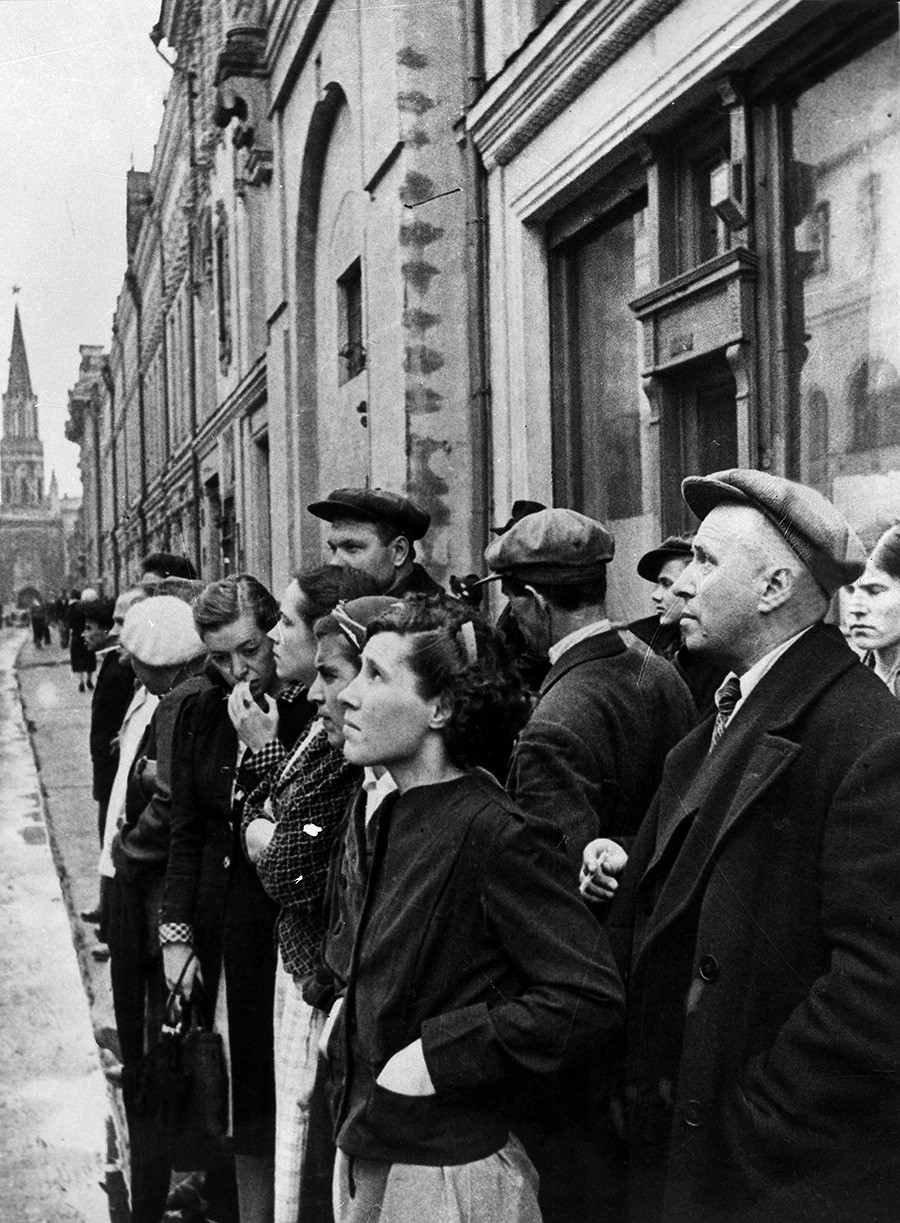
Moscow residents listen to the June 22 government radio announcement on the treacherous invasion of Nazi Germany.
Yevgeny Khaldei/Sputnik"People would not disperse. They were standing there, in silence, thinking. I tried to ask them what they were thinking. No-one replied. What was I thinking myself? I was thinking that a day would come when the last image of the war would be taken," Khaldei recalled. He could not even have dreamt that that last shot would be taken by him. Ahead lay 1,418 days of war, side by side with the troops. Khaldei was the only Soviet photographer who captured the whole war, from its first day to its last.
Five years of war
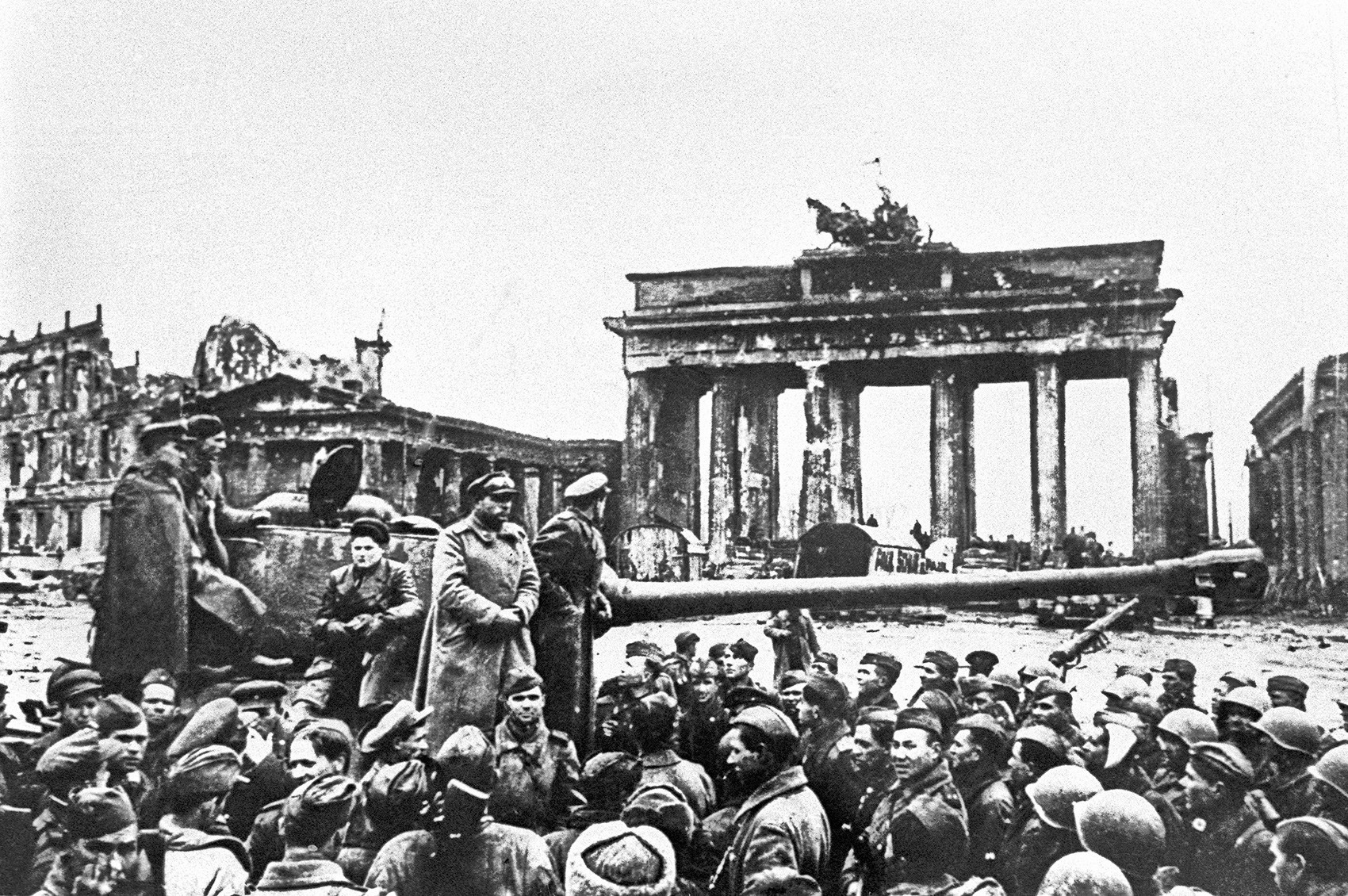
Rare photo of Soviet troops in Berlin, May 1945.
Yevgeny Khaldey/SputnikDevastated towns, soldiers in battle and in rare moments of rest, civilians left with nothing, a large number of deaths. Khaldei photographed everything he saw - "real life", as he described it, rather than state propaganda - from freezing faraway Murmansk to Berlin itself. He accompanied Soviet troops as they crossed half of Europe, but when he entered Berlin he could not shake the feeling that it did not look like a sufficiently triumphant finale.
"Everyone felt that the moment we had striven for all of those 1,418 days needed to culminate in something more dramatic. There stood the Reichstag, black with soot and smoke, amid an extraordinary silence," was how he recalled the taking of Berlin.
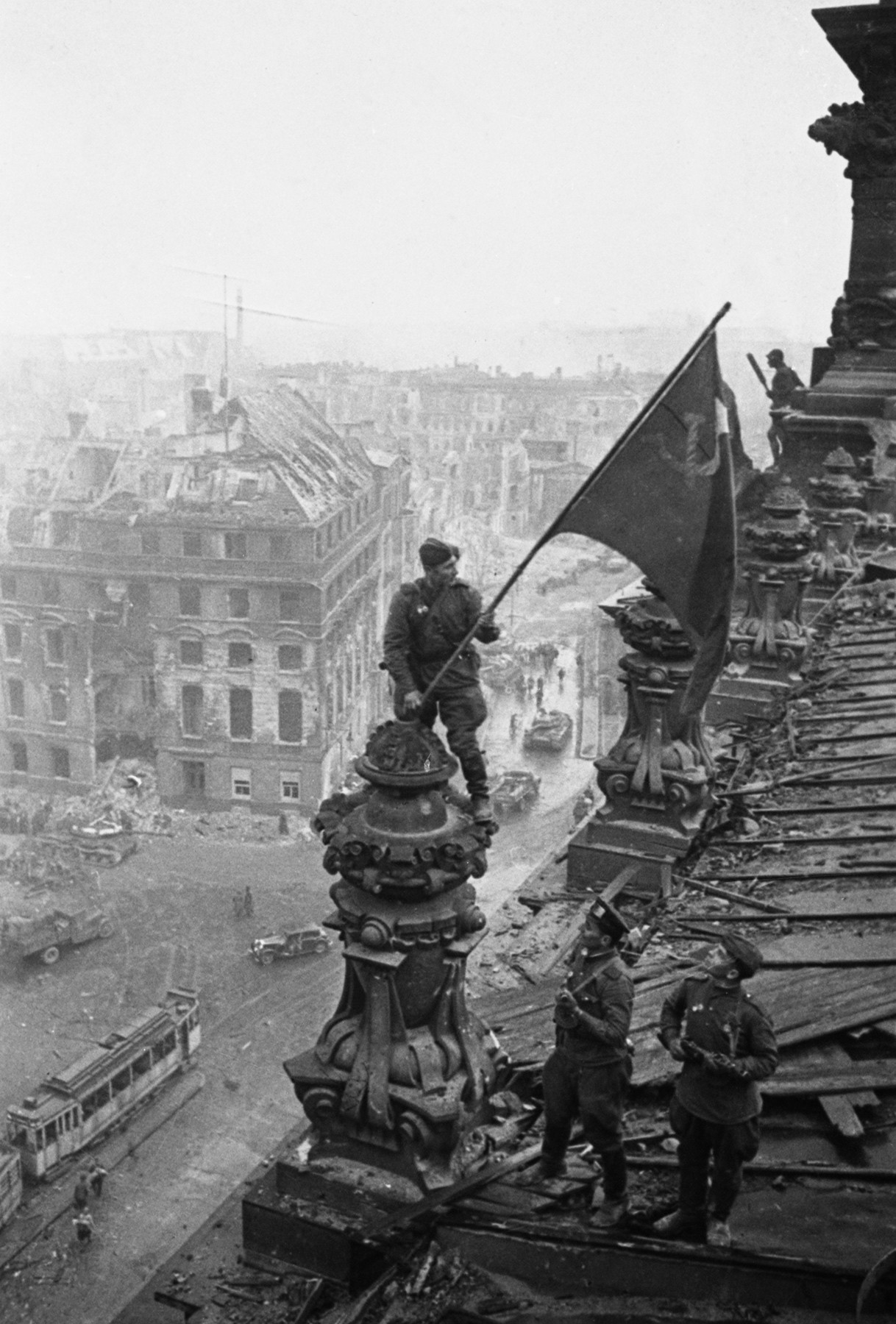
And even before Khaldei and his comrades reached the Reichstag, its entire perimeter had started to bristle with Soviet victory flags. Khaldei was too late to capture the moment shown in the famous photograph, so he had it re-enacted, as he himself explained years later.
Read more: This iconic WWII photo was staged
The flag with the hammer and sickle that featured in the photograph had been brought along by Khaldei, one of a total of three. He revealed they had been sewn from red tablecloths. After arriving in Berlin, he asked three random soldiers to hold up the flag as if they were hoisting it for the first time. Having selected the best angle, he shot two rolls of film. That is how the symbol of the Great Victory in World War II came into existence. The fact that the photograph had been staged was of no concern to anyone later.
A Jew
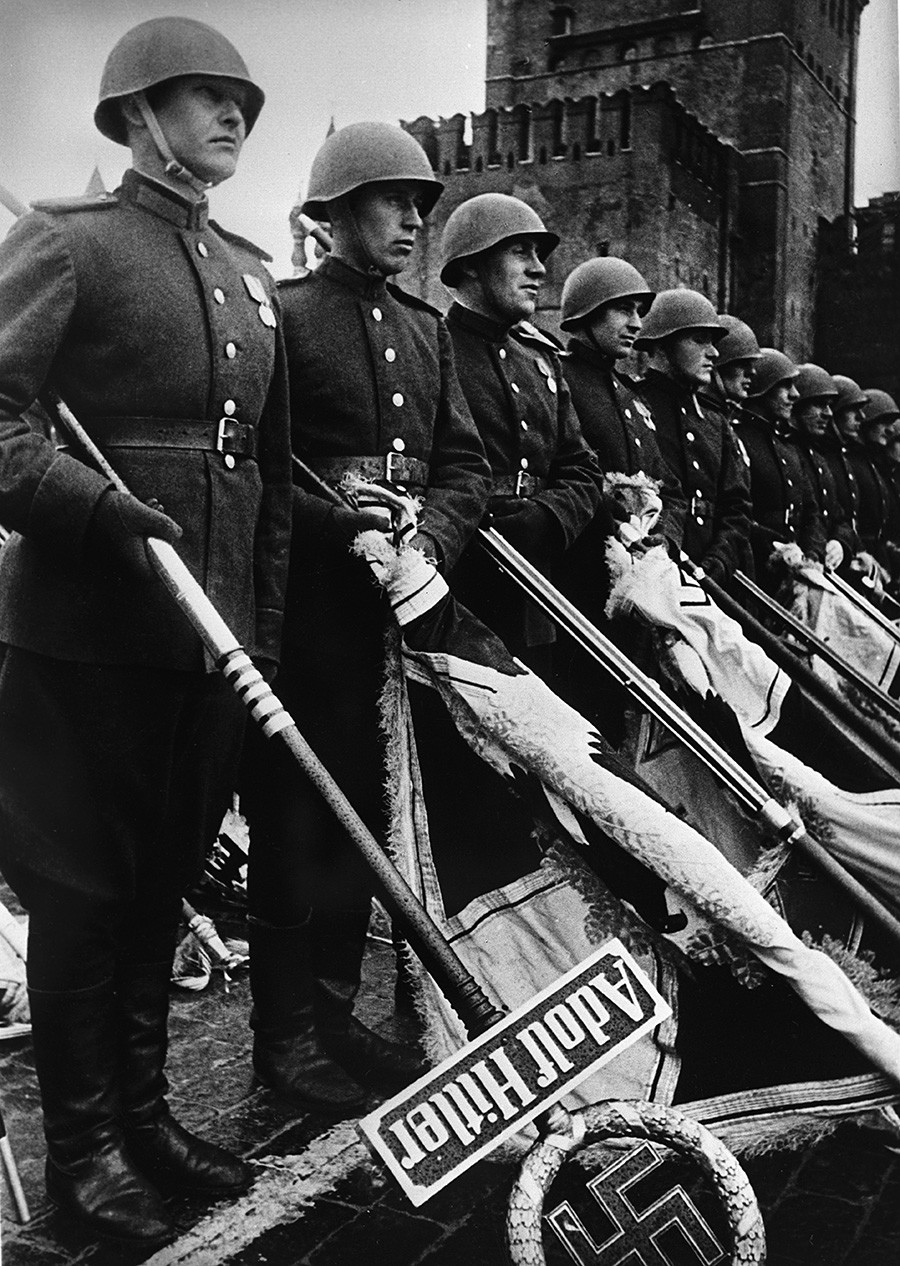
First Victory Parade on Red Square
Yevgeny Khaldey/SputnikNo-one cast doubt on Khaldei's achievements. He had photographed the most important moments of that period: the Potsdam Conference, the signing of Germany's surrender, the Nuremberg Trials, Georgy Zhukov on a grey horse and the very first Victory Parade on Red Square. After the war he was acknowledged as one of the country's best photographers and given nine Red Star and Patriotic War II Class medals and orders. But literally a year later, attitudes towards Jews in state institutions drastically changed.
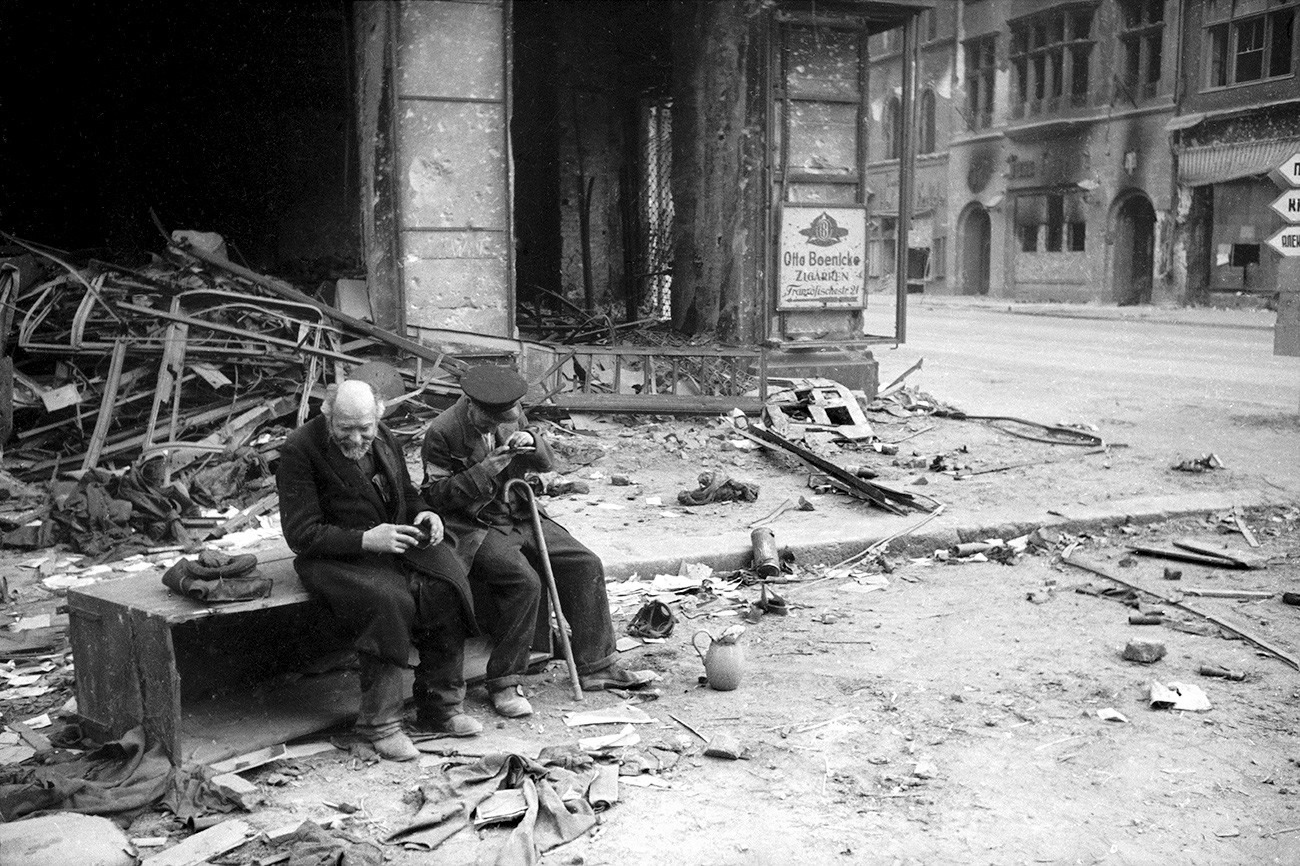
“Why are we fighting?” asks a blind man. Berlin. 1945.
Multimedia Art Museum MoscowIn 1946 attempts were made to dismiss him from TASS due to his refusal to deposit leftover shots from an assignment. A year later he had to face an evaluation panel, whose verdict was unequivocal: "A mediocre photoreporter who barely manages to meet working standards." The evaluation added that after the war Khaldei had got above himself, while his candidacy for membership of the Communist Party had dragged on for eight years but he had still not joined.
He was eventually dismissed in 1948 with the explanation that the move was "prompted by a reduction in the volume of work of the Moscow editorial office". In other words, he was being made redundant.
A long road
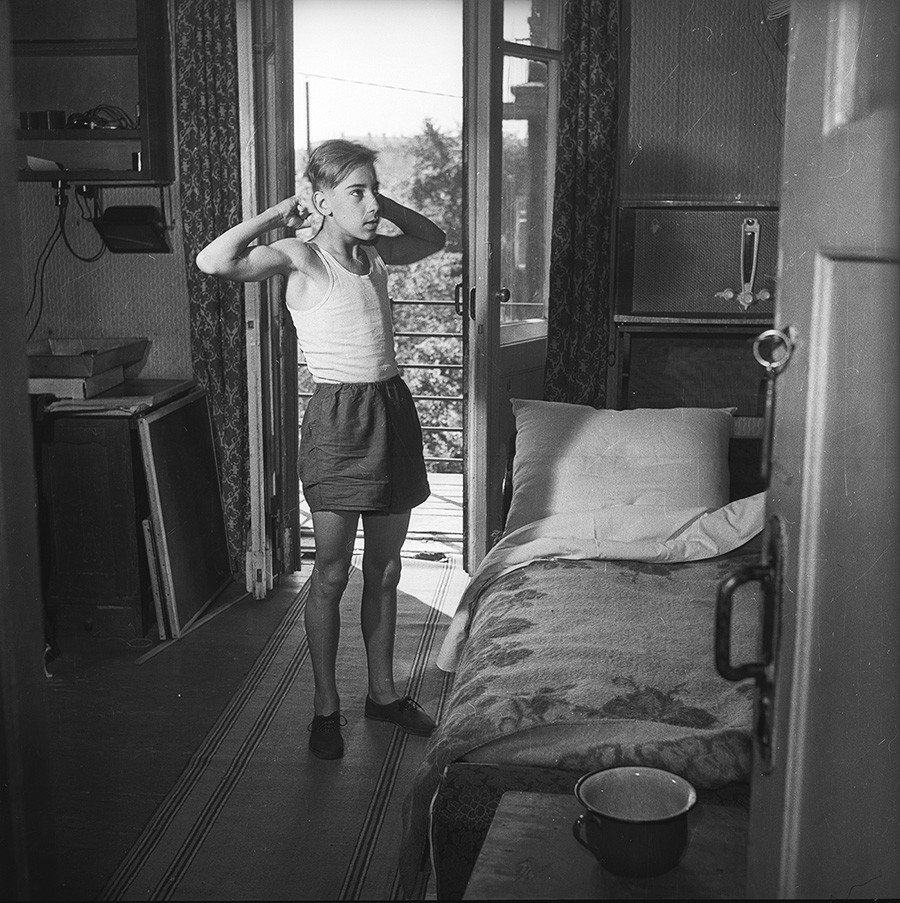
Vovka’s neighbor. Morning in Moscow. 1956.
Multimedia Art Museum MoscowThe photographer fell into disfavor with the authorities. For some time he was even seriously concerned for his life. The Soviet actor and director Solomon Mikhoels, whom Khaldei had photographed a lot, died in 1948 (it transpired subsequently that he had been killed on Stalin's orders). He smashed his glass negatives dating from the pre-war years with a hammer. And when Stalin quarreled with Yugoslav communist leader Josip Broz Tito, Khaldei destroyed his negatives of Tito by boiling them in a laundry bowl.
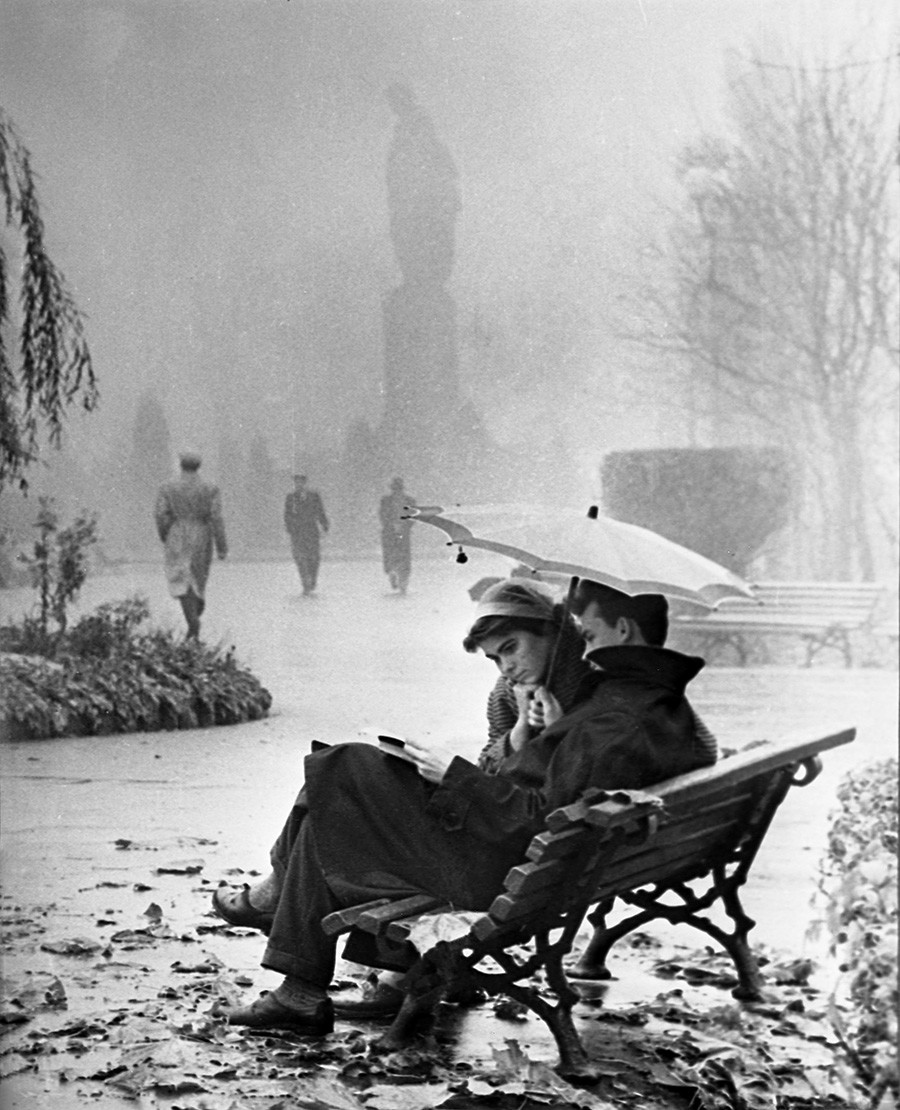
"Late autumn". 1961
Yevgeny Khaldey/SputnikFor 11 years after that Khaldei scraped by on casual earnings and only managed to get an official job nine years after Stalin’s death, in 1959. He spent another 17 years modestly working as a press photographer, and retired in 1976. No-one in the country remembered his achievements. He was effectively forgotten, and fresh recognition came only at the very end of his life. His fame was revived on the 50th anniversary of the Great Victory.
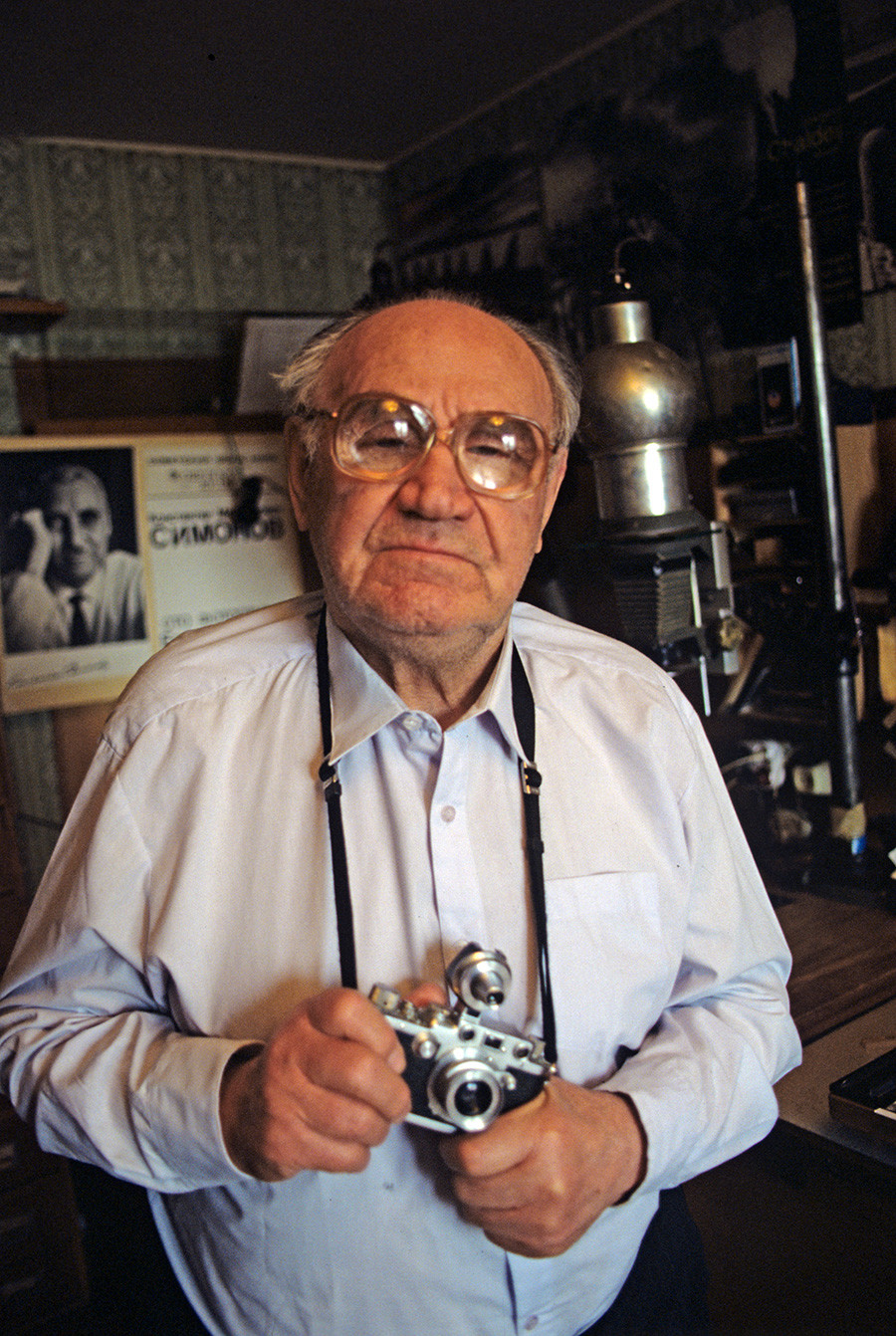
Khaldei in 1997.
Igor Mikhalev/SputnikIn 1995, by special invitation from the French president, Khaldei became a guest at the leading International Festival of Photojournalism in Perpignan, where he was given one of the most illustrious awards - the title of Knight of the Order of Arts and Letters. In late May 1997, half a year before the photographer's death, a documentary film about Khaldei premiered in Europe, and a book about him came out in America. His legendary photograph with the hoisting of the flag sold for $13,500 at an auction.
If using any of Russia Beyond's content, partly or in full, always provide an active hyperlink to the original material.
Subscribe
to our newsletter!
Get the week's best stories straight to your inbox